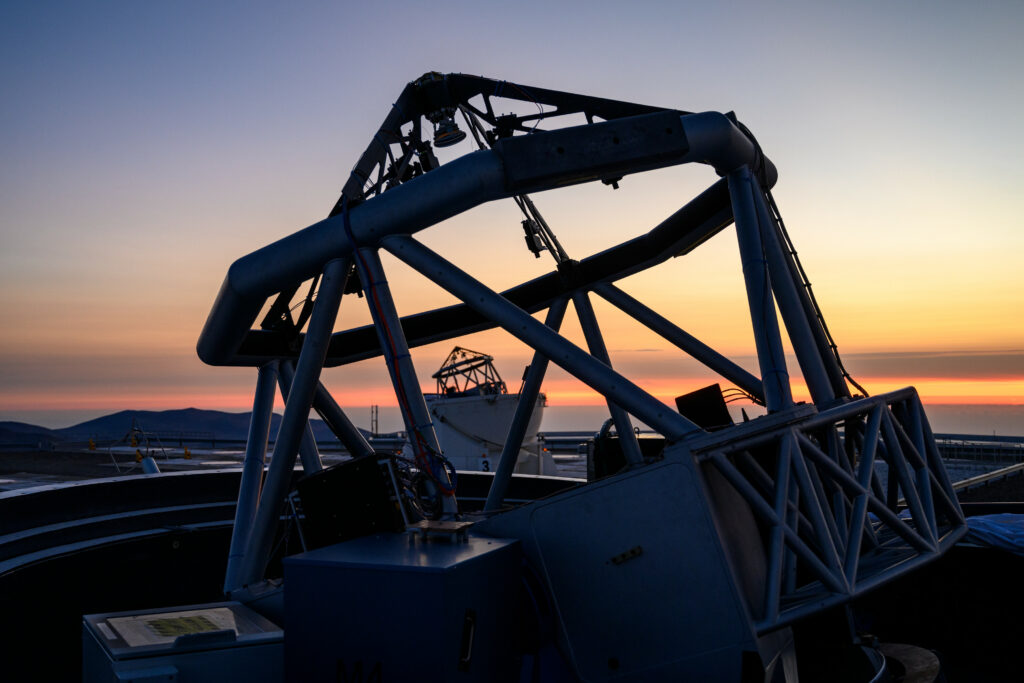The presented image was taken during sunset on the territory of the Paranal Observatory. It is home to the ESO’s Very Large Telescope (VLT). At the moment, it is the largest ground-based optical telescope in the world by total mirror area.

The watercolor paints of the sky create a stunning backdrop for the two Auxiliary Telescopes (AT) of the complex. There are four of them in VLT. AT telescopes are not stationary. They can move along rail tracks and work together to form a single instrument — a Very Large Telescope Interferometer (VLTI). A system of mirrors placed in underground tunnels directs individual light beams from Auxiliary telescopes to a laboratory room, where they are folded using a special technique called interferometry.
The described method makes it possible to create a giant “virtual telescope”, the effective aperture size of which is equal to the distance separating individual telescopes. In the case of VLTI, this is 140 meters. Thanks to this, it is capable of distinguishing image details that are inaccessible to individual telescopes. Using the VLTI mode, astronomers can study in detail the surfaces of stars, active galactic cores, young luminaries and many other astronomical objects.
The VLT complex also includes four stationary 8.2-meter Main telescopes capable of operating both individually and as part of the VLTI. One of them is equipped with a device for creating artificial stars. In combination with adaptive optics, it allows astronomers to compensate for the effects of atmospheric turbulence on the results of observations. As a result, the images of the observed objects are much clearer — as if they were photographed by a space telescope.
You can also read about the ESO’s Extremely Large Telescope being built in the Atacama Desert, which will surpass VLT in its characteristics.
According to https://esahubble.org
Follow us on Twitter to get the most interesting space news in time
https://twitter.com/ust_magazine

